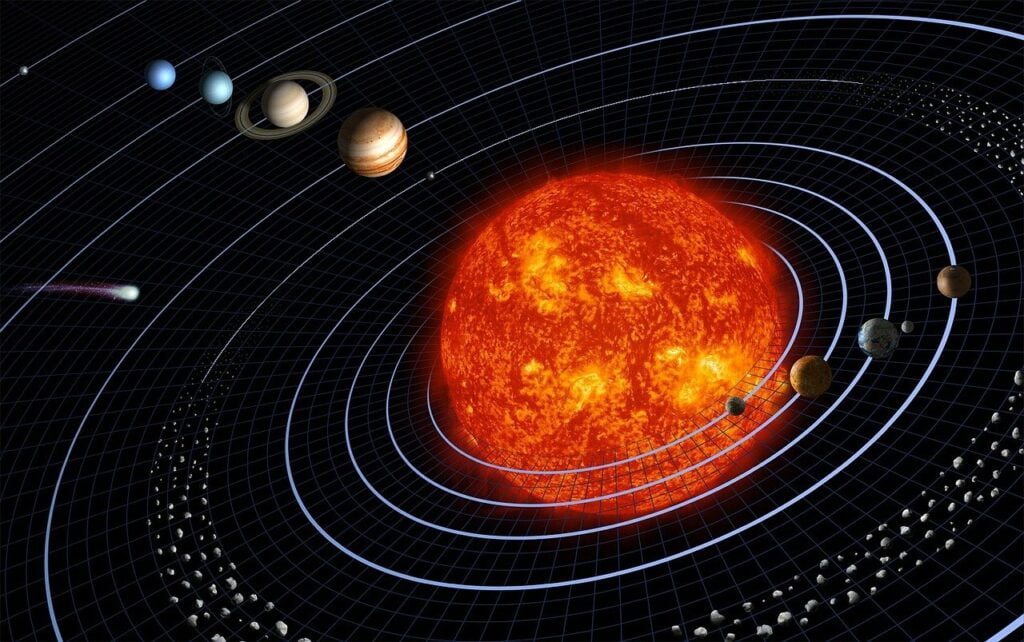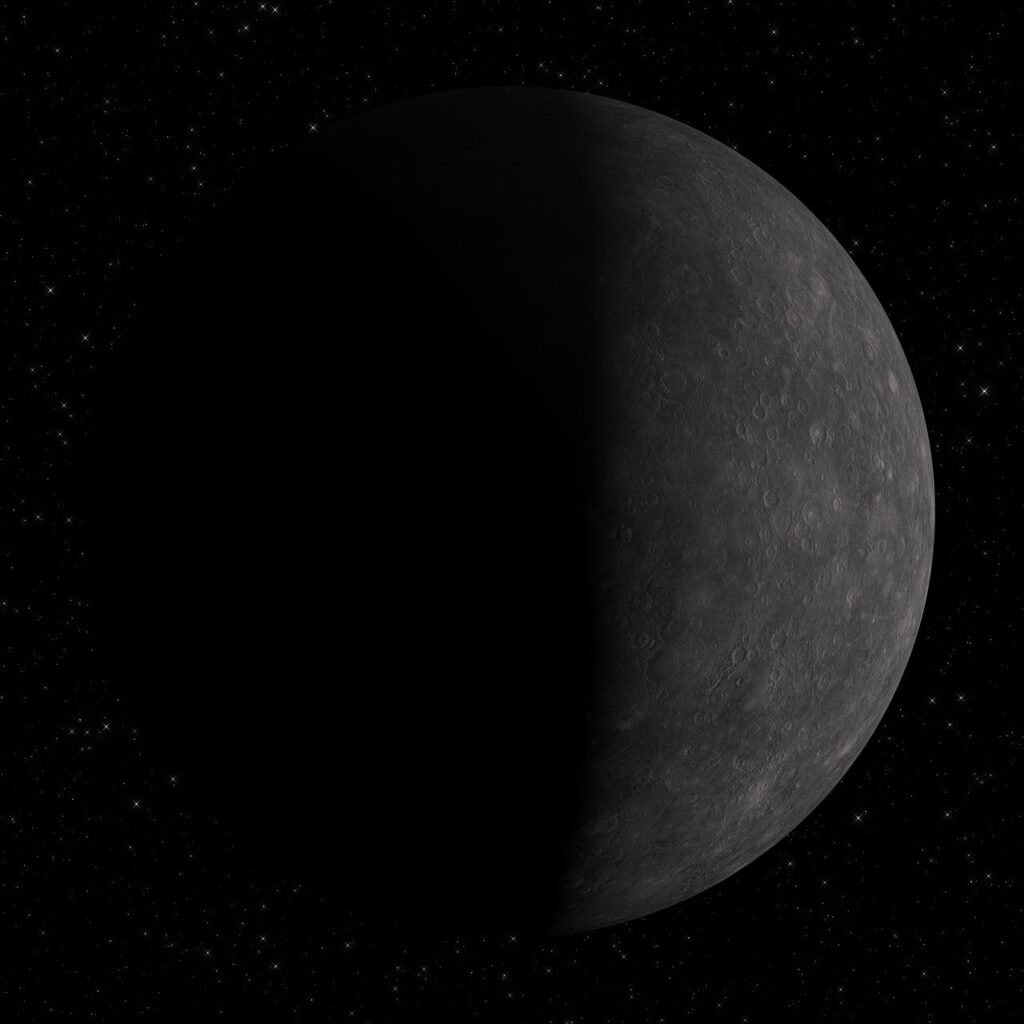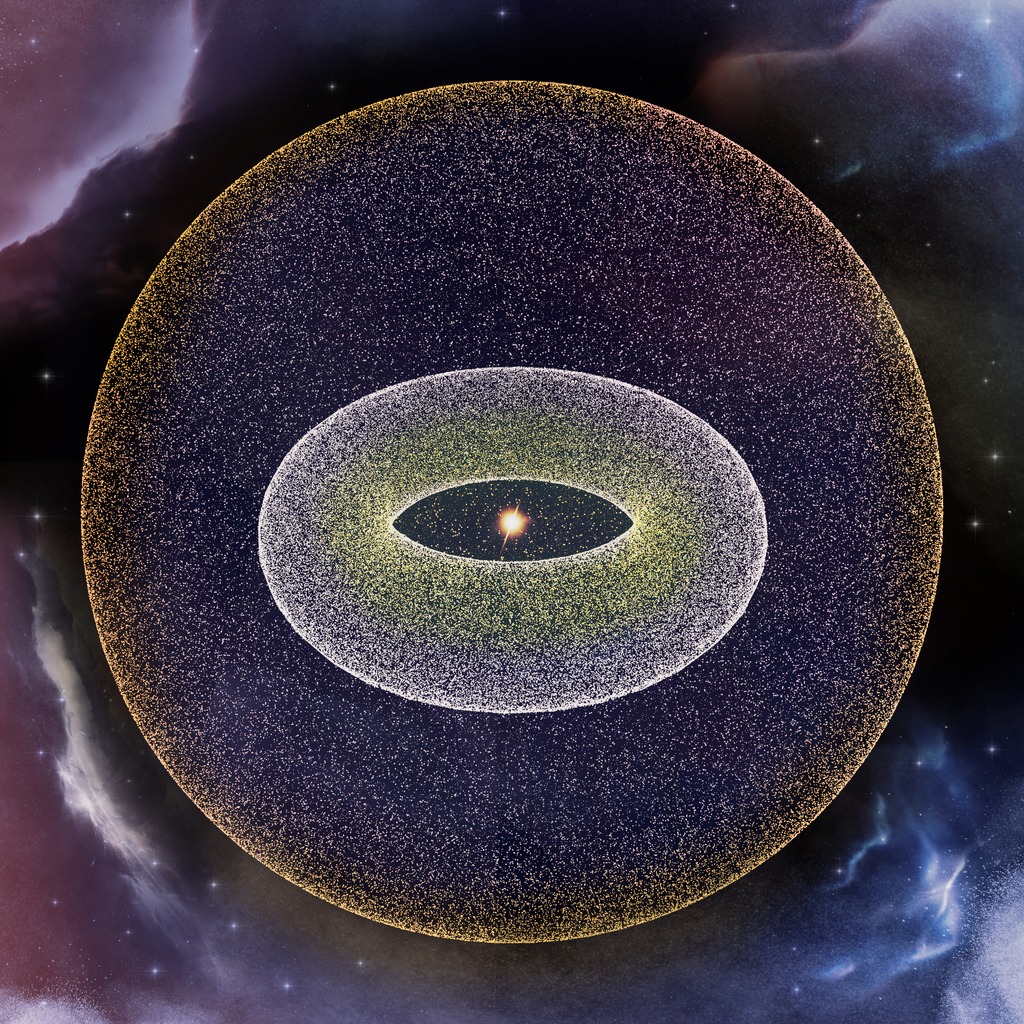
Oort Cloud
The vast expanse of our solar system extends far beyond the recognizable planets and the Kuiper Belt, reaching into a frigid, distant realm known as the Oort Cloud. This enigmatic region, named after Dutch astronomer Jan Oort, is a spherical cloud of icy bodies that encircles the Sun at distances ranging from 2,000 to 200,000 astronomical units (AU). While the Oort Cloud remains largely unexplored, its existence holds profound implications for our understanding of the solar system’s formation and evolution.
Discovery and Historical Context
The concept of the Oort Cloud emerged in 1950, when Oort proposed its existence to explain the long-period comets that occasionally grace our skies. These comets, with their highly elliptical orbits that can take thousands of years to complete, hinted at a reservoir of icy bodies residing far beyond the confines of the known solar system.
Oort’s theory was largely based on two observations:
- The distribution of comets: Long-period comets follow orbits that are extremely elongated, with aphelion distances (furthest point from the Sun) far exceeding the orbit of Neptune. This suggested the presence of a large reservoir of cometary bodies at these immense distances.
- The observed influx of new comets: Comets appear to be constantly replenished, with new bodies entering the inner solar system from an unknown source. The Oort Cloud provided a plausible explanation for this continuous supply of comets.
Structure and Composition
The Oort Cloud is a vast and sparsely populated region, believed to contain trillions of comets. It is divided into three distinct regions:
- Hills cloud (1,000-3,000 AU): This inner shell is thought to be the source of the short-period comets, which have orbital periods of less than 200 years.
- Inner Oort cloud (3,000-50,000 AU): This intermediate region is home to most long-period comets, with orbital periods of hundreds to thousands of years.
- Outer Oort cloud (50,000-200,000 AU): This outermost region is the least well-understood, and it may contain dwarf planet-sized bodies.
The objects within the Oort Cloud are thought to be composed primarily of ice and dust, with some containing rocky material. Their sizes range from small pebbles to dwarf planet proportions.
Origin and Formation
The formation of the Oort Cloud remains a topic of debate, but two main theories have emerged:
- Passing stars: The gravitational pull of passing stars may have scattered icy bodies from the inner solar system, sending them on long, elliptical orbits that eventually led to the formation of the Oort Cloud.
- Early solar system dynamics: During the formation of the solar system, the chaotic interactions among the newly formed planets may have ejected a large number of icy bodies, forming the Oort Cloud.
The formation of comets within the Oort Cloud is thought to involve the accumulation of ice and dust grains, which eventually coalesce into larger bodies. These comets remain dormant in the cold, distant regions of the cloud until a passing star or a disturbance from the inner solar system perturbs their orbits, sending them on trajectories towards the Sun.
Implications and Future Exploration
The Oort Cloud holds immense significance for our understanding of the solar system’s formation and evolution. It provides a glimpse into the early days of the solar system, when the planets were still forming and interacting dynamically.
Despite its vastness and remoteness, the Oort Cloud is not entirely inaccessible. Advances in astronomical technology, such as space telescopes like Hubble and the James Webb Space Telescope, have allowed us to study the faintest objects in the outer solar system.
In the future, missions specifically designed to explore the Oort Cloud may become a reality. These missions could provide groundbreaking insights into the composition, structure, and formation of this enigmatic region, further revealing the secrets of our solar system’s origins.
Dynamics and Interaction with Interstellar Space
The Oort Cloud’s orbital dynamics are governed by a delicate balance of gravitational forces. The Sun’s pull keeps the comets within its gravitational sphere of influence, while the gravitational pull of passing stars and galactic tides subtly perturb their orbits. These perturbations can cause some comets to be ejected from the Oort Cloud, venturing into interstellar space, while others can be deflected closer to the Sun, initiating their journey into the inner solar system.
Interstellar comets, those originating from other star systems, may have been captured by the gravitational pull of our Sun as they passed through the Oort Cloud. These interstellar visitors offer a glimpse into the composition of comets from other planetary systems, providing insights into the diversity of planetary environments beyond our own.
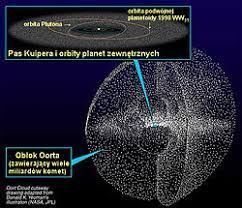
Role in Comet Activity
The Oort Cloud plays a crucial role in maintaining the population of long-period comets that periodically visit our inner solar system. As comets in the inner Oort Cloud are perturbed by passing stars or the gravitational influence of planets, they can be slingshotted into shorter, comet-like orbits. These perturbed comets then embark on a journey towards the Sun, where their icy surfaces sublimate, generating the spectacular tails that we associate with cometary activity.
The Oort Cloud’s vastness and the faintness of its objects pose significant challenges for direct observation. However, astronomers continue to devise innovative techniques to probe this distant realm. Infrared observations, sensitive to the thermal radiation emitted by icy bodies, can detect faint comets that are otherwise invisible to optical telescopes. Radio telescopes, capable of detecting radio waves emitted by comets, can also provide valuable information about their properties.
Future missions specifically designed to explore the Oort Cloud hold the promise of revolutionizing our understanding of this enigmatic region. These missions could employ techniques such as gravitational lensing, where the gravity of a star or planet magnifies the light from a distant object, to indirectly observe Oort Cloud objects. Alternatively, spacecraft could venture into the depths of the Oort Cloud, directly imaging and studying these icy remnants of the solar system’s formation.
Implications for Our Solar System’s Evolution
The Oort Cloud plays a profound role in shaping the evolution of our solar system, influencing both the inner and outer regions. In the inner solar system, it replenishes the population of long-period comets, which periodically inject fresh material and volatiles into the inner planets, potentially influencing their atmospheres and evolution.
In the outer solar system, the Oort Cloud acts as a protective shield, absorbing and diverting comets and asteroids that could potentially collide with the inner planets. However, it also harbors the potential for Earth-crossing comets, which could pose a threat to life on our planet.
The existence of Earth-crossing comets originating from the Oort Cloud is still a subject of debate among astronomers. Some studies suggest that the Oort Cloud contributes significantly to the influx of Earth-crossing comets, while others indicate that the majority of these comets originate from the scattered disk, a region beyond Neptune’s orbit.
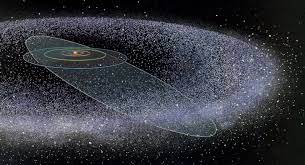
Conclusion and Future Directions
The Oort Cloud, despite its immense distance and faintness, remains a critical component of our solar system. Its vastness, composed of trillions of comets, holds clues to the formation and evolution of our solar system, providing a glimpse into the early days of our planetary neighborhood.
Despite significant progress in understanding the Oort Cloud, many questions remain unanswered. Ongoing research focuses on refining our observational techniques to directly detect Oort Cloud objects and unravel their composition, age, and distribution.
Future missions specifically designed to explore the Oort Cloud hold the promise of providing groundbreaking insights. These missions could employ techniques such as gravitational lensing and spacecraft flybys to indirectly or directly study Oort Cloud objects, providing a wealth of information about this enigmatic realm.
Key Findings and Insights from Studying the Oort Cloud:
- The Oort Cloud is a vast reservoir of comets, extending from the outer reaches of the solar system to thousands of times the distance between the Sun and Earth.
- The Oort Cloud’s composition is primarily ice and dust, with some rocky material.
- Objects within the Oort Cloud have highly elliptical orbits that can reach millions of astronomical units from the Sun.
- The Oort Cloud is thought to have formed from the gravitational influence of passing stars or the early chaotic dynamics of the solar system.
- The Oort Cloud plays a crucial role in maintaining the population of long-period comets and potentially impacting Earth.
Ongoing Research Challenges and Future Directions:
- Directly detecting Oort Cloud objects due to their immense distance and faintness.
- Understanding the composition, age, and distribution of Oort Cloud objects.
- Exploring the Oort Cloud’s role in the formation and evolution of our solar system.
- Investigating the potential hazard posed by Earth-crossing comets originating from the Oort Cloud.
The Oort Cloud, an enigma lurking at the fringes of our solar system, continues to spark our curiosity and challenge our understanding of the cosmos. As we continue to probe this distant and fascinating realm, we embark on a journey to unravel the secrets of our solar system’s birth and evolution
You may also like
Mercury: The Closest Planet to the Sun
Venus: The Earth’s Twin or a Very Different Planet?
Mars: Comprehensive Exploration, unveiling the Mysteries
Jupiter: A Cosmic Giant – Symphony of Storms
Saturn: A Gaseous Giant with Enthralling Rings and Diverse Moons
Useful links:
NASA Oort Cloud: https://plus.nasa.gov/video/space-in-a-snap-where-does-the-solar-system-end-the-oort-cloud-2/
ESA Oort Cloud: https://www.esa.int/ESA_Multimedia/Images/2014/12/Kuiper_Belt_and_Oort_Cloud_in_context
JAXA Oort Cloud: https://global.jaxa.jp/projects/rockets/topics.html
CSA Oort Cloud: https://www.asc-csa.gc.ca/eng/
Roscosmos Oort Cloud: https://en.wikipedia.org/wiki/Roscosmos

